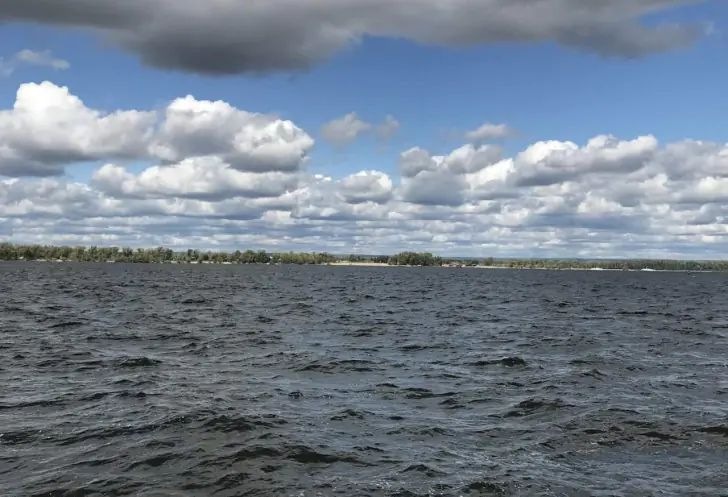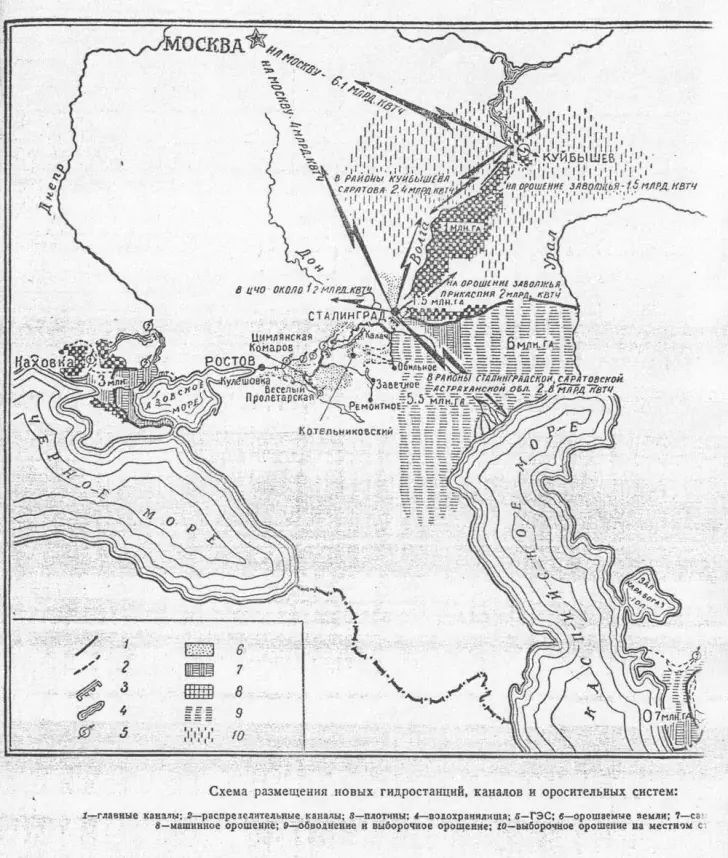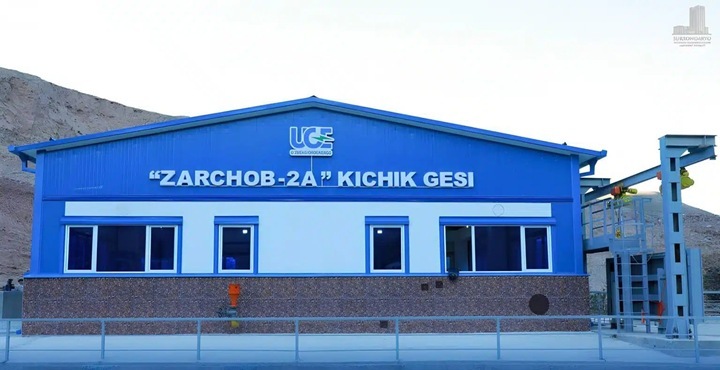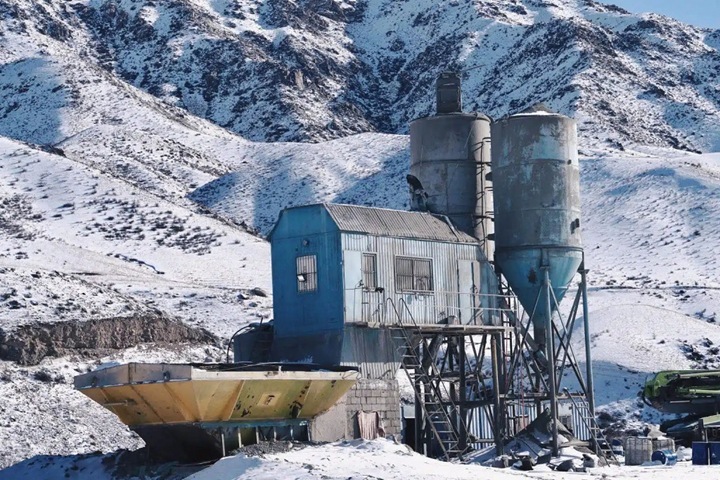How did they not build a canal between the Volga and Kazakhstan
The construction of a canal connecting the Volga and Ural rivers was to be one of the big steps in the development of water transport and infrastructure of the USSR. Now this project is considered to be one of the most ambitious and unsuccessful projects of the Soviets. It was conceived to connect two large rivers – the Volga, flowing in western Russia, and the Urals, flowing in Bashkortostan, Chelyabinsk and Orenburg regions, as well as in Kazakhstan. They planned to implement it first in the 1950s, then in the 1970s. The goal: to improve navigation, speed up and reduce the cost of cargo transportation and expand the waterway between the Union republics.

However, the project faced many challenges: difficult natural conditions, the need for significant financial and labor costs, as well as environmental and social aspects related to the resettlement of the population and landscape changes.
What were the advantages of the project?
The project was conceived for two reasons at once: the support of the Ural River and Kazakhstan, as well as the preservation of the Caspian Sea level. The river, which flows for the most part through steppe landscapes, faces serious problems, based on catastrophic shallowing. Kazakhstan is located in an extremely arid territory, and most of the water goes to support agriculture.
The project was truly insane and promising – to lay more than 600 km of canal that could connect the left bank of the Volga, namely the Stalingrad reservoir (now the Volga Dam) and the source of the Urals, the newspaper Pionerskaya Pravda reported. A navigable gateway was to appear at the source, followed by dams, and at the other end a whole hydroelectric power station to support the irrigation system. By paving another route for the Volga, Kazakhstan would be able to develop agriculture and move the Soviet Union forward, which meant a lot in the 1950s. At least that was the calculation.

What they intended to achieve after construction (in theory):
- Navigation improvements. The canal would make it possible to connect two large water streams, which would greatly simplify the transportation of goods between different regions, both in the western and eastern parts of the country. This could speed up logistics and reduce transportation costs.
- Economic development. Simplification of access to water transport could attract investment and contribute to the development of industry, agriculture and other sectors.
- Development of fisheries. The project included issues of environmental protection measures, which would raise the level of ecology of water in the river and would increase the number of fish.
Construction has been started, even some part of the way has been paved – in the city of Volzhsky, a section of 1.5 km of roads dug by GULAG prisoners to the Zakanalie SNT has been preserved. However, with the death of Joseph Stalin in 1953, the construction of the project was suspended, and then completely abandoned its implementation. The new government came to the conclusion that the USSR does not need this channel so much – the country is building socialism, there are more important expenses.
Mutual cooperation between Russia and Kazakhstan in the rehabilitation of transboundary water bodies is not forgotten to this day. In November 2024, a meeting of representatives of the two countries was held in Volgograd, at which the problems of shallowing the Volga and the Urals were again raised. However, the project was not mentioned this time.
– The main tasks are to make sure that you do not harm your neighbor. Some of the rivers from Russia flow to Kazakhstan, and some – in the opposite direction. Border areas may suffer from low water or flooding. This year, the whole Urals, the whole of Siberia was drowning. And Kazakhs and I have been regulating our reservoirs together to minimize damage. Working groups have been set up for each river. We work out the principles of water allocation between countries, coordinate the water balance. The protocol on water separation on the Ural River between Russia and Kazakhstan appeared in Soviet times. But we would like to have such protocols for all our important rivers,” said Vadim Nikonorov, Deputy head of the Federal Agency for Water Resources.
Why was the channel abandoned?
One of the main reasons was environmental problems. Scientists expressed fears that the powerful flow of water, which will be directed towards Kazakhstan, will not be used in full. These fears were not unfounded. The working group established in 2020 to develop measures for the rehabilitation of the Ural basin approved that the main reason for the shallowing of the Urals is the irrational use of its resources in Kazakhstan.
Secondly, the project faced economic unjustifiability. As stated by the head of the Ministry of Foreign Affairs Lavrentiy Beria, who after Stalin’s death carried out the actual management of the country, the construction costs were supposed to be about 3.7 billion rubles in terms of the 1953 rate. And if the labor of prisoners was not so expensive, then laying a canal and setting up an irrigation system cost a penny a lot. Nikolai Samus, a former geologist of the Volgograd branch of the institute “Gidroproekt”, told about the contribution of political prisoners in an interview with “Arguments and Facts”. Thus, in conditions of limited resources and rising costs, the project gradually lost priority in the list of relevant government initiatives.
Over time, the needs of the regions have also changed. The irrigation and water supply issues that initially accompanied the project have become less relevant. At the same time, new approaches to water resources management emerged, which made the implementation of the canal less attractive.
As a result, a combination of environmental, economic and social factors, as well as the emergence of alternative solutions for improving water supply, led to the fact that the construction of a canal between the Volga and the Urals was never carried out.
Conclusions
Since history does not know the word “if”, it is impossible to assume whether this channel would benefit or damage the country. Some researchers believe that the Volga could repeat the scenario of the Aral Sea, which began to dry up rapidly after using it in cotton cultivation in Uzbekistan. However, the Volga, even without the canal, is now successfully coping with its drying. Other scientists are of the opinion that the laying of such a channel could help Central Asia with the development of agriculture. Now there is no need to talk about the implementation of this project, and it’s not even just about geopolitics. But it is worth admitting that the idea was not just bold, but very bold.
Adelina Lutfullina (“Proofs”)


